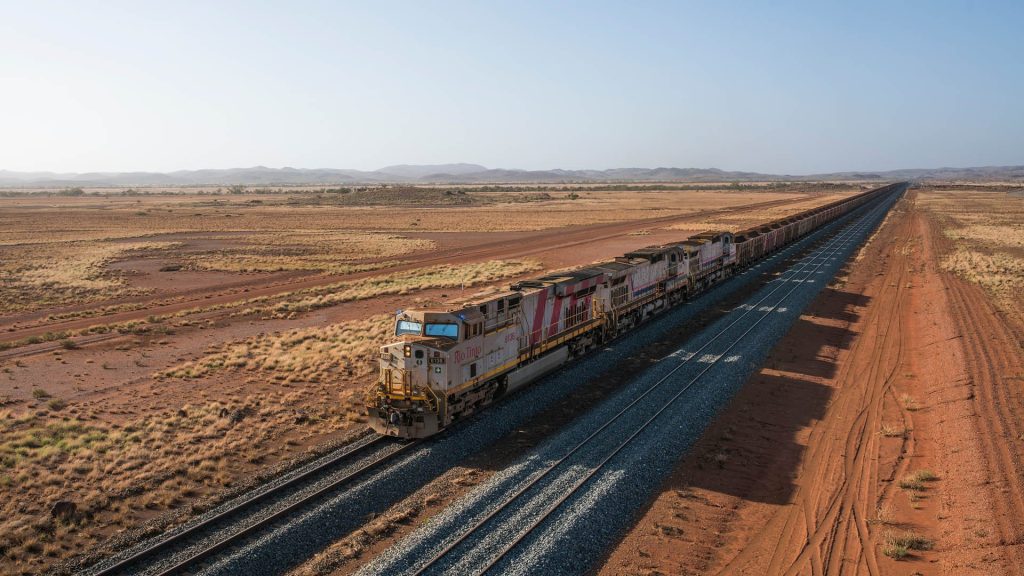 Hitachi Rail will soon commence the third and final phase of the interlocking system upgrade of Rio Tinto’s autonomous heavy haul rail network in Western Australia.
Hitachi Rail will soon commence the third and final phase of the interlocking system upgrade of Rio Tinto’s autonomous heavy haul rail network in Western Australia.
In the Western Australia’s Pilbara region, Rio Tinto operates an integrated system of 17 iron ore mines and four port terminals, all linked by a comprehensive railway network.
In 2019, Hitachi Rail worked with Rio Tinto to develop and launch AutoHaul™ the world’s first fully autonomous heavy haul rail operation, capable of moving about 1 million tonnes of iron ore a day. Today, the 2.4 km-long trains, monitored remotely from an operations centre in Perth, travel across more than 1,900 km of track to deliver iron ore from mine to port.
At the same time that AutoHaul™ pioneered across the Pilbara and into the history books, a major project to replace the Integrated Control and Supervision System (ICSS) that supports the network’s operation was also launched.
Program Director, Mazahir Yusuf, said the massive and complex task of replacing Rio Tinto’s interlocking system aimed to eliminate potential safety, operational and efficiency risks. “Our focus is on supporting Rio Tinto to future proof their network with an innovative, scalable and flexible solution,” Yusuf said.
The three-year, eight-staged project replaces the existing ICSS MicroTrax interlocking system with a Hitachi Rail-designed MicroLok II interlocking to optimise network throughput, on-time operations and life cycle costs, all while minimising faults and failures.
Central to the network’s operation, the ICSS is the technology platform that allows for integrated, centralised and local train control and monitoring, as well as supervision of subsystems located trackside.
The computer-based interlocking system performs key wayside functions, both in the field and remotely, such as train detection and track circuit integrity, and can “self-diagnose” and send alerts back to the control centre.
MicroLok II’s advanced technology can monitor multiple lines of railroad track and crossings to safely and efficiently move freight to its destination. The system’s functions include train detection, track circuit integrity, coded track circuit communication, cab signalling code generation and event recording. It also includes a vital interlocking code and a code system for nonvital control and indications.
The completed ICSS Phase 1 and Phase 2 projects replaced the existing interlocking system and supporting wayside equipment across a 100 km stretch of the Tom Price line and 200 km of the Yandi line.
Phase 3 will now focus on the Paraburdoo Line and is expected to go live in 2025.
Share on:



